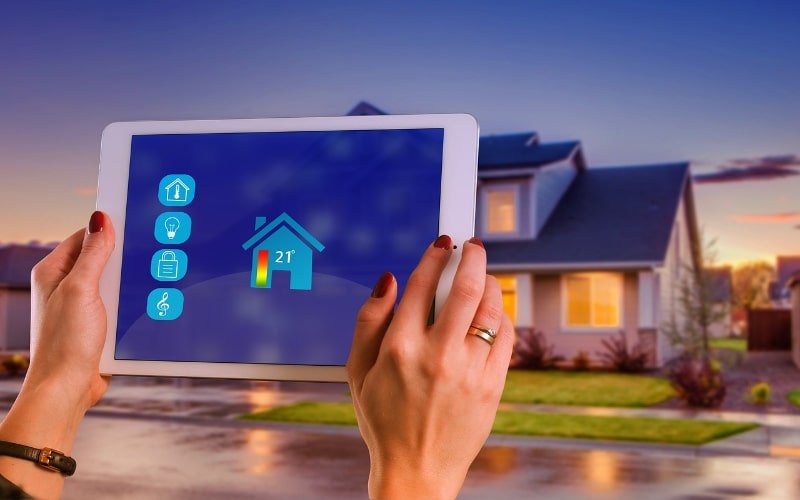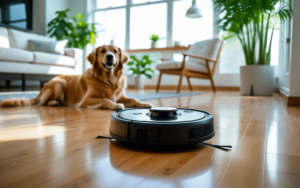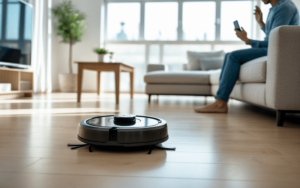Smart thermostats have emerged as an effective solution for homeowners looking to reduce their energy expenses.
By utilizing advanced features such as remote control and learning algorithms, these devices can optimize heating and cooling patterns to minimize waste.
Studies indicate that smart thermostats can lower energy bills by up to 12% on heating and 15% on cooling annually.
The convenience of adjusting home temperatures from anywhere adds to their appeal, making it easier to maintain comfort while avoiding unnecessary energy costs.
With capabilities like geofencing, these thermostats can automatically adjust settings based on the homeowner’s location, further enhancing efficiency.
Investing in a smart thermostat not only contributes to lower bills but also promotes environmentally friendly practices by reducing overall energy consumption.
Homeowners may find that embracing this technology results in significant long-term savings and improved home comfort.
Please note that this article contains affiliate links. As an Amazon Associate, we earn from qualifying purchases at no extra cost to you.
Understanding Smart Thermostats

Smart thermostats represent a significant advancement in home temperature control. They provide efficiency, convenience, and potential energy savings, making them a popular choice among homeowners.
Defining Smart Thermostats
A smart thermostat is an advanced device designed to automatically adjust heating and cooling systems based on user behavior, preferences, and environmental conditions.
These thermostats can connect to the internet, allowing remote control via smartphones or tablets.
They often feature learning capabilities, enabling them to adapt to the homeowner’s schedule. As a result, they can optimize settings for comfort while minimizing energy use.
Many smart thermostats also integrate with other smart home devices, enhancing their functionality.
How Smart Thermostats Work
Smart thermostats operate through a combination of sensors and algorithms.
The sensors monitor indoor and outdoor temperatures. They gather data to determine when to heat or cool a space for optimal comfort.
These devices can learn user preferences over time. With manual input or usage patterns, they adjust automatically.
For instance, when users are away, the thermostat can reduce energy consumption by minimizing heating or cooling.
Mobile app connectivity allows users to change settings remotely, further promoting energy savings.
Many also generate reports detailing energy usage, helping homeowners understand their consumption patterns and make informed decisions.
Benefits of Using Smart Thermostats

Smart thermostats offer numerous advantages that enhance energy management in homes. They not only improve energy efficiency but also provide significant cost savings. Furthermore, their remote accessibility and learning capabilities make them a valuable addition to modern households.
Energy Efficiency
One of the primary benefits of smart thermostats is their enhanced energy efficiency.
These devices monitor and adjust heating and cooling based on real-time data, ensuring optimal performance.
By using algorithms, they analyze historical usage patterns and environmental factors to minimize energy waste.
For example, smart thermostats can automatically lower heating during the night or when no one is home.
This proactive approach significantly reduces energy consumption and helps maintain consistent indoor temperatures.
As a result, homes equipped with smart thermostats often see a marked reduction in energy use compared to traditional systems.
We may earn a small commission if you purchase through this link. Thank you for supporting our content!
Cost Savings
Cost savings are a major draw for homeowners considering smart thermostats.
Research indicates that these devices can save users approximately 8-15% on heating and cooling bills annually, translating to substantial financial benefits over time.
By optimizing system operation, smart thermostats reduce wear and tear on heating and cooling units, potentially extending their lifespan.
This means fewer repair or replacement costs, further adding to the financial advantages.
Many users find that the initial investment in a smart thermostat pays for itself within a year or two through reduced utility bills.
Remote Accessibility
Smart thermostats provide unparalleled convenience through remote accessibility.
Users can control their home’s temperature from anywhere using smartphones, tablets, or computers.
This feature is especially useful for adjusting settings before returning home or modifying the temperature during vacations.
Moreover, with mobile notifications and alerts, homeowners can stay informed about energy use and system performance.
This transparency helps users make informed decisions regarding their heating and cooling practices and encourages energy-saving behavior.
Learning Capabilities
Learning capabilities are another impressive feature of smart thermostats.
These devices can adapt to users’ schedules and preferences over time, automatically adjusting settings for maximum comfort and efficiency.
By leveraging machine learning, smart thermostats analyze data on user habits, such as when people are typically home or away.
This predictive approach allows the device to optimize heating and cooling cycles, potentially providing a tailored experience for each household member.
As the thermostat learns and evolves, it becomes increasingly effective at maintaining the desired comfort level while minimizing energy consumption.
Installation and Compatibility
Smart thermostat installation requires careful attention to both the installation process and compatibility with existing HVAC systems. Understanding these aspects can significantly impact efficiency and functionality.
Installation Process
The installation process typically involves several key steps to ensure a smooth setup.
Begin by turning off the power to the HVAC system to prevent any electrical issues.
Next, remove the old thermostat and take note of the wiring connections.
Many smart thermostats require a common wire (C-wire) for constant power. If this wire is missing, users may need to install one or opt for a model that doesn’t require it.
Once the wiring is confirmed, follow the manufacturer’s instructions to connect the new thermostat.
Securely attach the heating and cooling wires to their respective terminals, often labeled ‘W’ for heating and ‘Y’ for cooling.
After completing the physical installation, turn the power back on and follow the setup prompts on the smart thermostat to finalize the configuration.
Compatibility with HVAC Systems
Not all smart thermostats are compatible with every HVAC system, making it crucial to check compatibility beforehand.
Most thermostats work seamlessly with conventional forced air systems. However, systems such as baseboard heating or heat pumps may require specific models.
Consult the manufacturer’s compatibility guide which typically includes clear instructions on determining system requirements.
It is advisable to check the voltage and wiring configurations to ensure a proper match.
Users may also find it helpful to use compatibility check tools offered by some manufacturers to simplify this process.
Optimizing Smart Thermostat Settings
To maximize energy savings, optimizing smart thermostat settings is crucial.
Users should embrace features that allow for personalized heating and cooling schedules.
1. Set a Regular Schedule:
Establish a daily routine, adjusting temperatures based on occupancy.
For example, lowering the temperature during work hours and raising it before returning home can save significant energy.
2. Utilize Geofencing:
Smart thermostats can detect occupants’ locations.
This feature adjusts the temperature when the house is empty, ensuring energy is not wasted.
3. Set Temperature Zones:
If applicable, users can set different temperatures in various rooms.
This ensures comfort where needed without overconditioning unoccupied spaces.
4. Monitor Energy Usage:
Regularly checking energy reports can help identify patterns.
Users can adjust settings based on usage data to enhance efficiency.
5. Consider Seasonal Changes:
Adjust settings with the seasons.
For instance, in winter, a comfortable range is 68°F during the day and lower at night, while summer can be set at 75°F or higher.
This article contains affiliate links, which means we may earn a commission if you purchase through our links, at no extra cost to you. As an Amazon Associate, we earn from qualifying purchases. Thank you for supporting our content!
Read more abou




